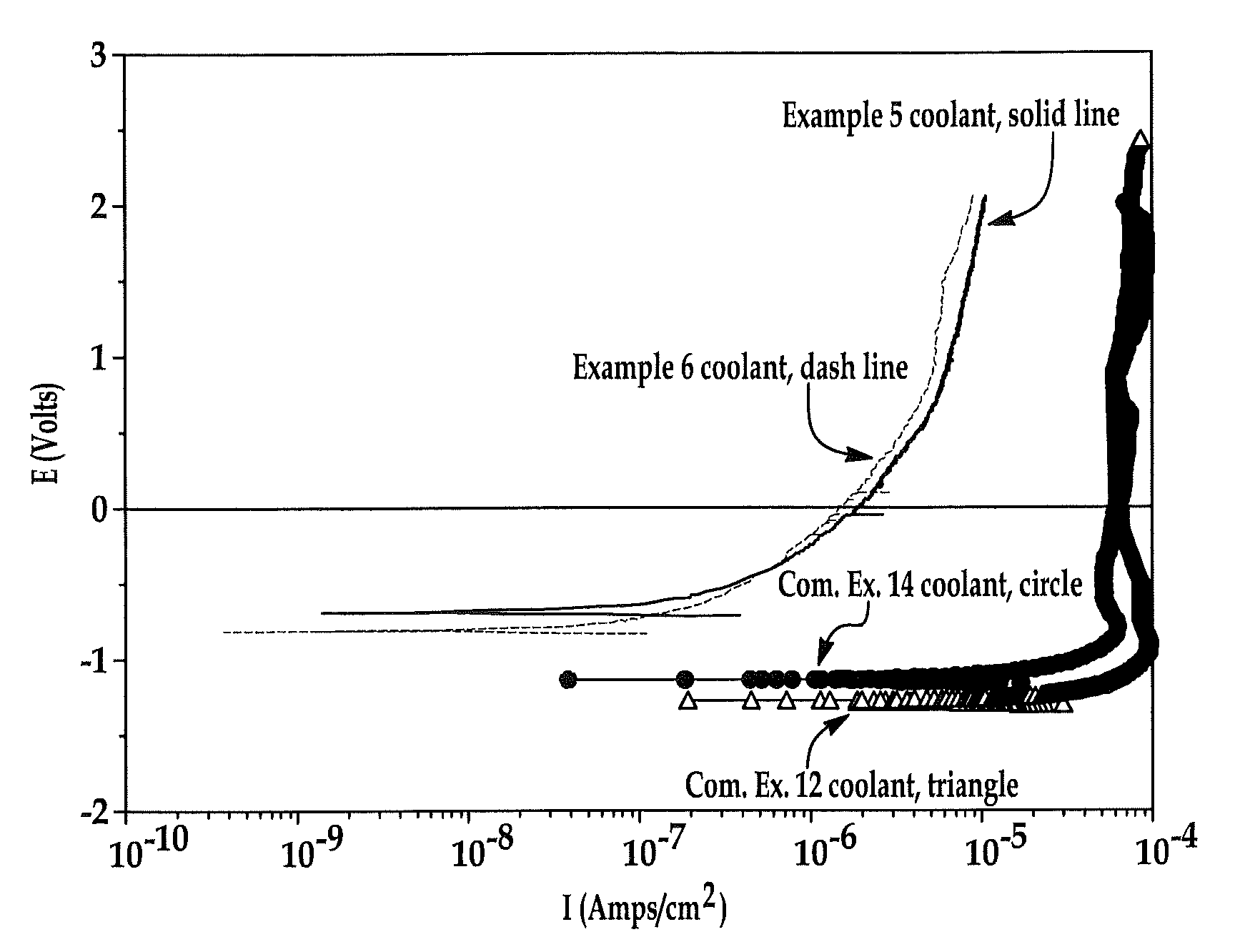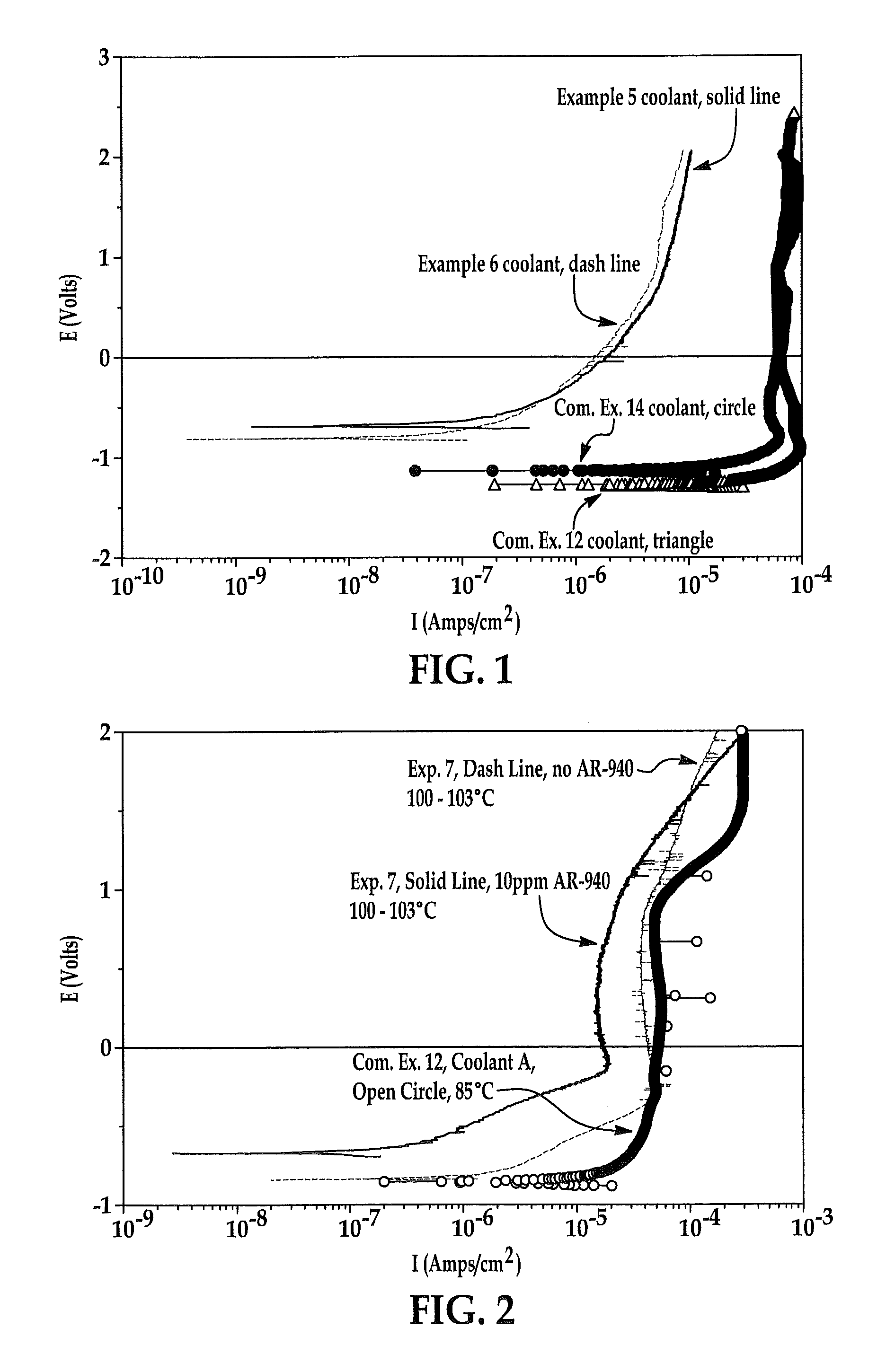Heat transfer fluids and corrosion inhibitor formulations for use thereof
a technology of heat transfer fluid and corrosion inhibitor, which is applied in the direction of machines/engines, mechanical equipment, light and heating apparatus, etc., can solve the problems of thermostat sticking, crevice corrosion at the hose neck, and many types of problems in the cooling system of the engine, so as to improve the corrosion protection
- Summary
- Abstract
- Description
- Claims
- Application Information
AI Technical Summary
Benefits of technology
Problems solved by technology
Method used
Image
Examples
examples 9-10
Examples 9 -10
[0078]The compositions shown in Table 11 were tested according to ASTM D4340 using SAE 319 sand cast aluminum alloy as the test specimens. Amounts in Table 11 are in weight percent based on the total weight of the heat transfer fluid.
[0079]
TABLE 11Example 9Example 10EG93.103393.1042Na-TT0.47500.4750NaOH2.20012.2001Neodecanoic Acid0.96000.96002-EHA2.87512.8751PM-51500.20000.2000H3PO40.17000.1700Magnesium acetate tetrahydrate0.00450.0045AR-9400.00100.0000Dye and colorants0.01100.0110ASTM D4340 Results, Corrosion Rate,−0.010.00mg / cm2 / week
[0080]The ASTM D4340 results show that using a nitrate free coolant composition comprising magnesium ions, an aliphatic carboxylic acid (or salt thereof), an inorganic phosphate, and at least one component selected from the group consisting of azole compounds, copper alloy corrosion inhibitors, phosphonocarboxylates, and phosphinocarboxylates prevents aluminum corrosion.
[0081]Additionally, it has been found that coolant compositions compr...
PUM
| Property | Measurement | Unit |
|---|---|---|
| MW | aaaaa | aaaaa |
| volume | aaaaa | aaaaa |
| surface area | aaaaa | aaaaa |
Abstract
Description
Claims
Application Information
 Login to View More
Login to View More - R&D
- Intellectual Property
- Life Sciences
- Materials
- Tech Scout
- Unparalleled Data Quality
- Higher Quality Content
- 60% Fewer Hallucinations
Browse by: Latest US Patents, China's latest patents, Technical Efficacy Thesaurus, Application Domain, Technology Topic, Popular Technical Reports.
© 2025 PatSnap. All rights reserved.Legal|Privacy policy|Modern Slavery Act Transparency Statement|Sitemap|About US| Contact US: help@patsnap.com


